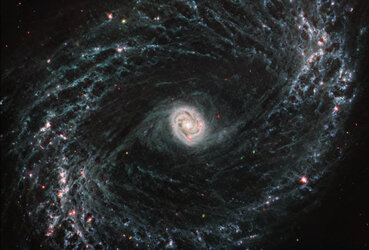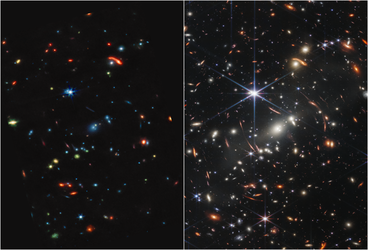Accept all cookies Accept only essential cookies See our Cookie Notice

About ESA
The European Space Agency (ESA) is Europe’s gateway to space. Its mission is to shape the development of Europe’s space capability and ensure that investment in space continues to deliver benefits to the citizens of Europe and the world.
Highlights
ESA - United space in Europe
This is ESA ESA facts Member States & Cooperating States Funding Director General Top management For Member State Delegations European vision European Space Policy ESA & EU Space Councils Responsibility & Sustainability Annual Report Calendar of meetings Corporate newsEstablishments & sites
ESA Headquarters ESA ESTEC ESA ESOC ESA ESRIN ESA EAC ESA ESAC Europe's Spaceport ESA ESEC ESA ECSAT Brussels Office Washington OfficeWorking with ESA
Business with ESA ESA Commercialisation Gateway Law at ESA Careers Cyber resilience at ESA IT at ESA Newsroom Partnerships Merchandising Licence Education Open Space Innovation Platform Integrity and Reporting Administrative Tribunal Health and SafetyMore about ESA
History ESA Historical Archives Exhibitions Publications Art & Culture ESA Merchandise Kids Diversity ESA Brand Centre ESA ChampionsLatest
Space in Member States
Find out more about space activities in our 23 Member States, and understand how ESA works together with their national agencies, institutions and organisations.
Science & Exploration
Exploring our Solar System and unlocking the secrets of the Universe
Go to topicAstronauts
Missions
Juice Euclid Webb Solar Orbiter BepiColombo Gaia ExoMars Cheops Exoplanet missions More missionsActivities
International Space Station Orion service module Gateway Concordia Caves & Pangaea BenefitsLatest
Space Safety
Protecting life and infrastructure on Earth and in orbit
Go to topicAsteroids
Asteroids and Planetary Defence Asteroid danger explained Flyeye telescope: asteroid detection Hera mission: asteroid deflection Near-Earth Object Coordination CentreSpace junk
About space debris Space debris by the numbers Space Environment Report In space refuelling, refurbishing and removingSafety from space
Clean Space ecodesign Zero Debris Technologies Space for Earth Supporting Sustainable DevelopmentApplications
Using space to benefit citizens and meet future challenges on Earth
Go to topicObserving the Earth
Observing the Earth Future EO Copernicus Meteorology Space for our climate Satellite missionsCommercialisation
ESA Commercialisation Gateway Open Space Innovation Platform Business Incubation ESA Space SolutionsLatest
Enabling & Support
Making space accessible and developing the technologies for the future
Go to topicBuilding missions
Space Engineering and Technology Test centre Laboratories Concurrent Design Facility Preparing for the future Shaping the Future Discovery and Preparation Advanced Concepts TeamSpace transportation
Space Transportation Ariane Vega Space Rider Future space transportation Boost! Europe's Spaceport Launches from Europe's Spaceport from 2012Latest

NGC 1433 (MIRI image - annotated)
Thank you for liking
You have already liked this page, you can only like it once!
This image of the nearby galaxy NGC 1433, captured by Webb’s Mid-Infrared Instrument (MIRI) shows compass arrows, scale bar, and color key for reference.
The north and east compass arrows show the orientation of the image on the sky. Note that the relationship between north and east on the sky (as seen from below) is flipped relative to direction arrows on a map of the ground (as seen from above). At the lower right is a scale bar labeled 7,000 light-years, 30 arcseconds. The length of the scale bar is approximately one-fifth the total width of the image. Below the image is a color key showing which MIRI filters were used to create the image and which visible-light color is assigned to each filter. In the image of NGC 1433, blue, green, and red were assigned to Webb’s MIRI data at 7.7, 10 and 11.3, and 21 microns (the F770W, F1000W and F1130W, and F2100W filters, respectively).
This image taken by the NASA/ESA/CSA James Webb Space Telescope shows one of a total of 19 galaxies targeted for study by the Physics at High Angular resolution in Nearby Galaxies (PHANGS) collaboration. Nearby barred spiral galaxy NGC 1433 takes on a completely new look when observed by Webb’s Mid-Infrared Instrument (MIRI).
NGC 1433’s spiral arms are littered with evidence of extremely young stars releasing energy and, in some cases, blowing out the gas and dust of the interstellar medium they plough into. Areas that once appeared dark and dim in optical imaging light up under Webb’s infrared eye, as clumps of dust and gas in the interstellar medium absorb the light from forming stars and emit it back out in the infrared.
Webb’s image of NGC1433 is a dramatic display of the role that dynamic processes within the forming stars, dust, and gas play in the larger structure of an entire galaxy.
At the centre of the galaxy, a tight, bright core featuring a unique double ring structure shines in exquisite detail, revealed by Webb’s extreme resolution. In this case, that double ring is actually tightly wrapped spiral arms that wind into an oval shape along the galaxy’s bar axis.
NGC 1433 is classified as a Seyfert galaxy, a galaxy relatively close to Earth that has a bright, active core. The brightness and lack of dust in the MIRI image of NGC 1433 could hint at a recent merger or even collision with another galaxy.
MIRI was contributed by ESA and NASA, with the instrument designed and built by a consortium of nationally funded European Institutes (The MIRI European Consortium) and NASA’s Jet Propulsion Laboratory, in partnership with the University of Arizona.
-
CREDIT
NASA, ESA, CSA, and J. Lee (NOIRLab), A. Pagan (STScI) -
LICENCE
ESA Standard Licence

NGC 1433 (MIRI image)

Webb’s first deep field (MIRI and NIRCam)

Stephan’s Quintet – MIRI imaging

NGC 1433















 Germany
Germany
 Austria
Austria
 Belgium
Belgium
 Denmark
Denmark
 Spain
Spain
 Estonia
Estonia
 Finland
Finland
 France
France
 Greece
Greece
 Hungary
Hungary
 Ireland
Ireland
 Italy
Italy
 Luxembourg
Luxembourg
 Norway
Norway
 The Netherlands
The Netherlands
 Poland
Poland
 Portugal
Portugal
 Czechia
Czechia
 Romania
Romania
 United Kingdom
United Kingdom
 Slovenia
Slovenia
 Sweden
Sweden
 Switzerland
Switzerland

























